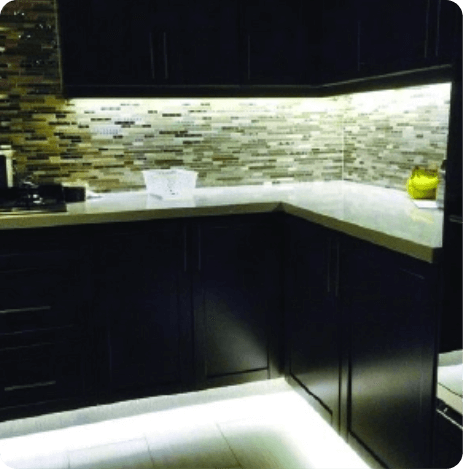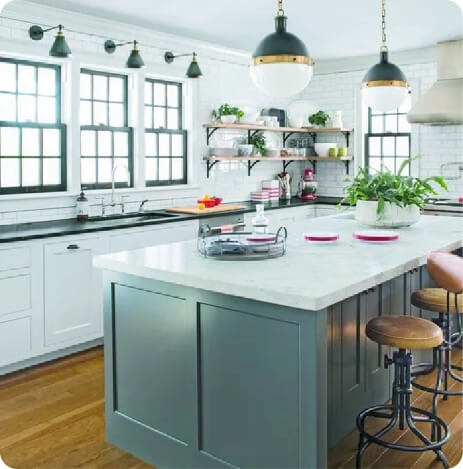Kitchen Remodeling Services in Carmel, NY
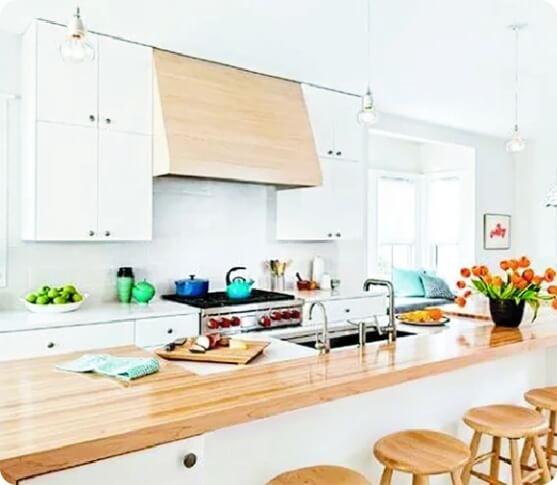
Your Home Is Much More Than An Address
The kitchen is the center of your family’s day-to-day living. In short, the kitchen is where memories are made. Considering the role your kitchen plays, it’s important to ensure that it is well maintained and contains everything you are looking for in the space. Your kitchen should be a space that perfectly reflects your personal style and tastes and meets the needs of your lifestyle. Whether you are updating parts of an outdated kitchen or doing a full kitchen renovation, we can help you bring life back into the heart of your home.
Honey Do Men offers customers peace of mind knowing that their space will be transformed - exceeding their expectations. If your kitchen isn’t working for you (or is making you work harder), a kitchen remodel is a great solution. There are many benefits to updating your kitchen:
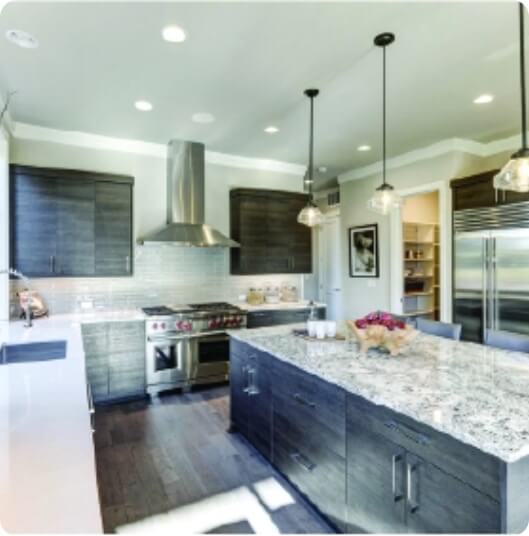
Increased Home Value
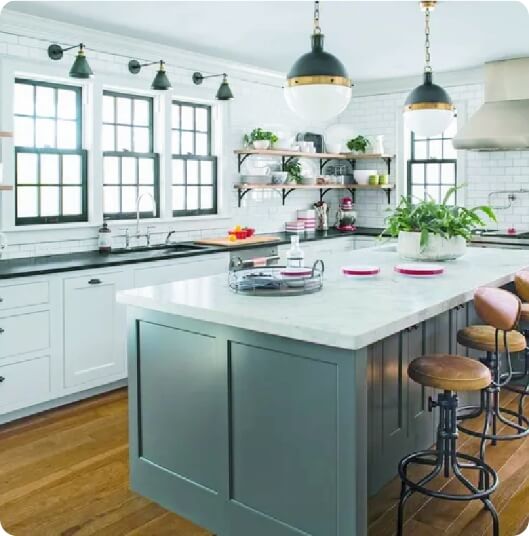
Enhanced Aesthetics
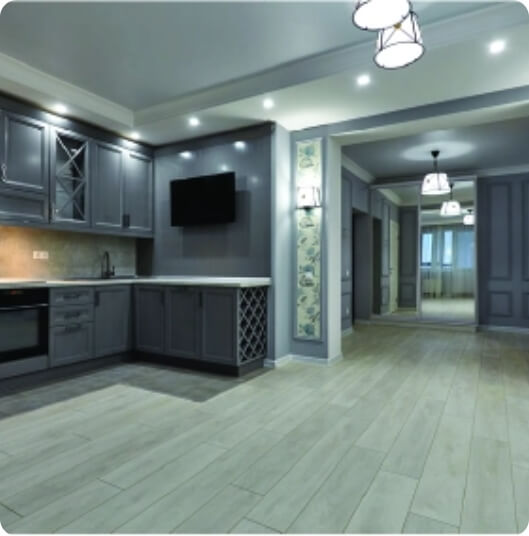
Optimized Functionality
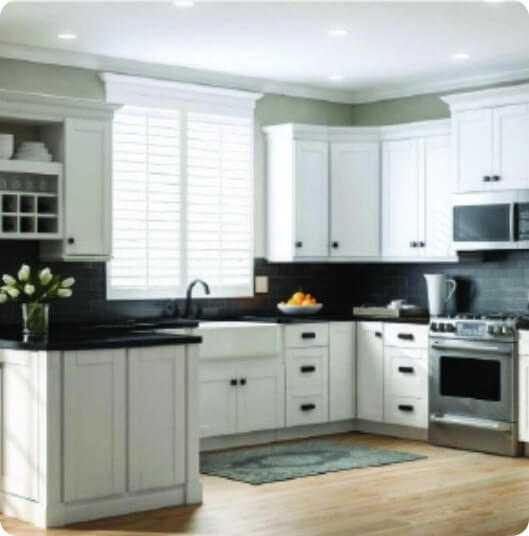
Updated Technology
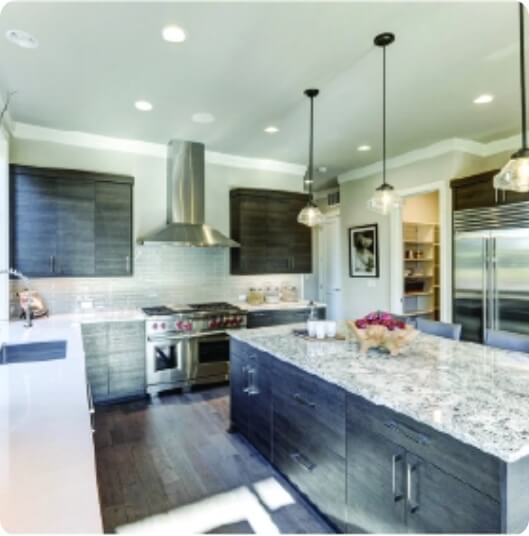
Improved Energy Efficiency
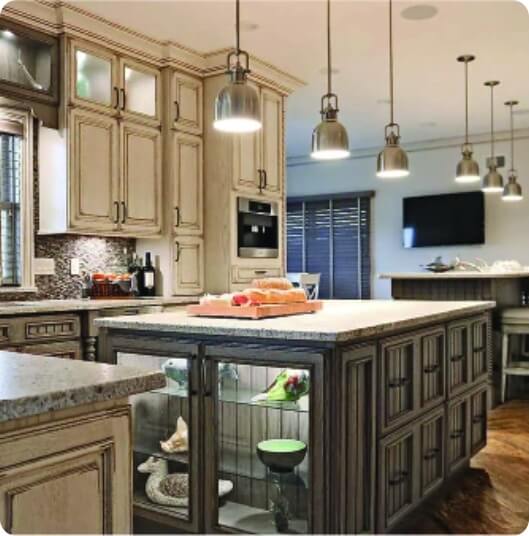
Our Customer-Centric Approach
Our Kitchen Remodeling Services Include, But Are Not Limited To:
- Full Kitchen Remodels
- Reconfiguring Awkward Layouts
- Updating Hardware
- Refinishing Cabinets
- Replacing Cabinets
- Painting Cabinets
- Backsplashes
- Countertops
- Flooring
- Tiling
- Windows
- Lighting
- Appliances
- Sinks
- Plumbing
- Electrical
- Open Floor
- Plans Shelving
- Pantries
- Butler’s Pantries
- Wine Storage
- Storage Solutions
- Outdoor/Indoor Cohesion
- Painting
- Maximizing Ceiling Height
- Islands
- Walls
- Custom Work

Kitchen Styles
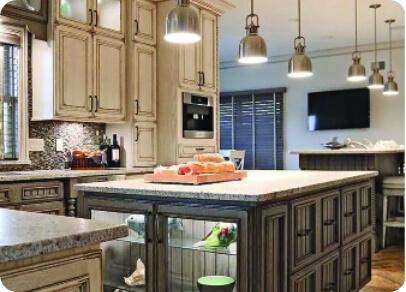
Traditional
Rooted in 18th and 19th century design. Focus on symmetry and order that includes weathered, patinated pieces.
Palette: Florals, toile, stripes, layered patterns
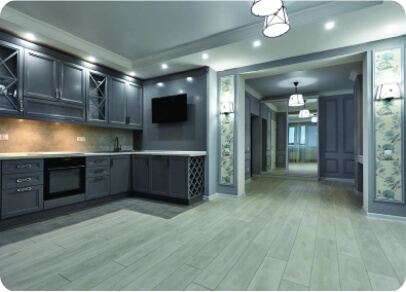
Transitional
Similar to traditional style, a transitional is more laid back and relaxed
Palette: Neutrals
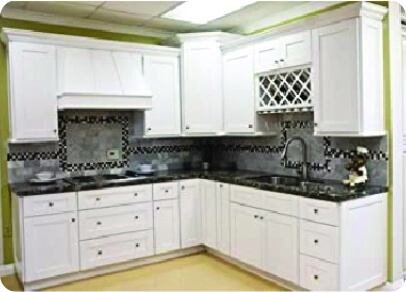
Art-Deco
Embraces designs from the 1920’s and 1930’s that symbolized technological advancement and industrialization.
Palette: Striking Bold Colors Paired With Symmetrical, Angular Forms and Metal
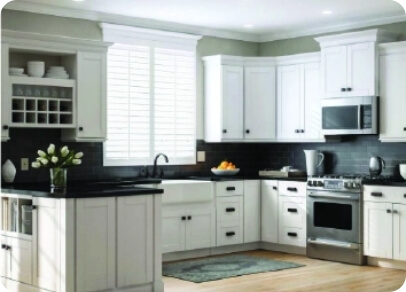
Mid-Century Modern
Reminiscent of the 1950’s and 1960’s. Clean lines and contemporary features with a minimalist aesthetic.
Palette: Bright, Bold colors
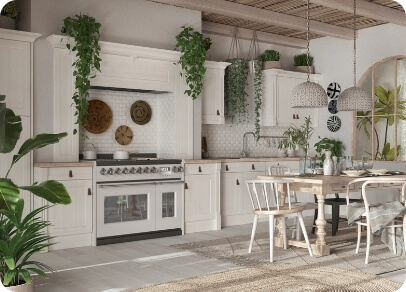
Coastal/Beach
Coastal inspired with a casual, easygoing style.
Palette: Weathered, Natural Materials, Coastal Colors, Pops Of Color
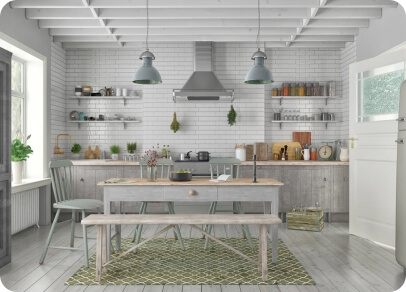
Scandinavian
Simplistic, functional and minimalistic. Characterized by clean lines and natural materials.
Palette: Neutral And Muted Shades Of Whites, Grays, Sage Greens And Light Blues
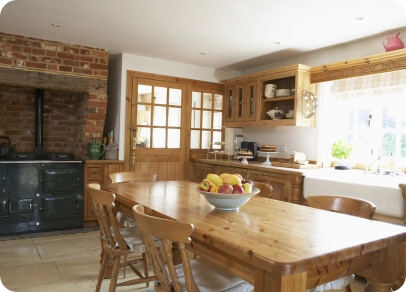
Farmhouse
A mix of old country charm with modern conveniences. Characterized by exposed wood beams and columns, large windows and rustic elements.
Palette: Muted Earth Tones And Neutral Colors

Rustic
Natural and organic elements that come straight from the earth. Down-to-earth feel using wood and raw materials with a distressed/aged look.
Palette: Calming And Traditional With, Natural, Monochrome, Muted Colors
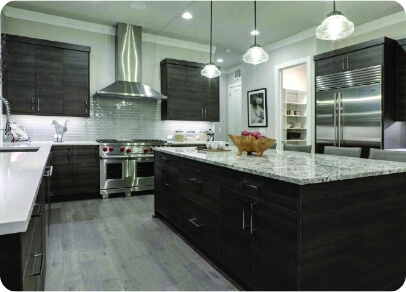
Cottage
The typical hallmark of a cottage style kitchen is the prevalence of the color white. Minimalistic design elements and distressed surfaces provide a “homey” feel in a smaller space.
Palette: Monochromatic, Light And Airy Colors
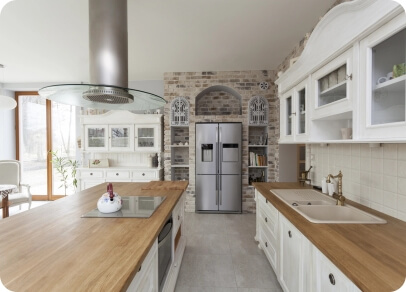
Mediterranean
Inspired by the sea and sun. Casually elegant with natural materials (such as stone, wood and brick), wrought iron details and intricate tilework.
Palette: Neutral, Warm hues
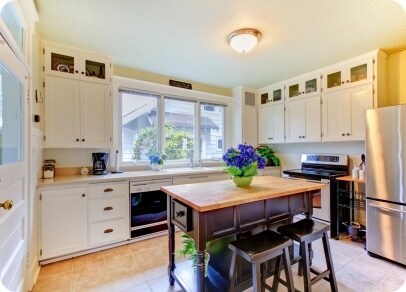
Craftsman
A blend of classic and contemporary. The focus is on the elements, specifically solid, rich wood cabinets and paneling with clean, straight lines.
Palette: Calming, Earthy, Organic
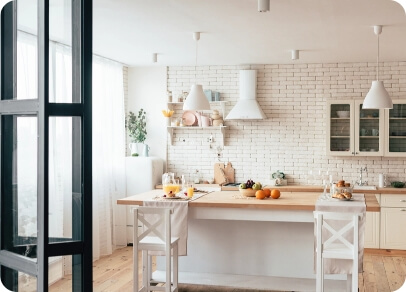
Eclectic
As the name implies, an eclectic kitchen combines a dash of whimsy and a lot of personal self-expression. A fashionable mix of elements casually collected over time, a mix and match of meaningful momentos.
Palette: The Sky's The Limit
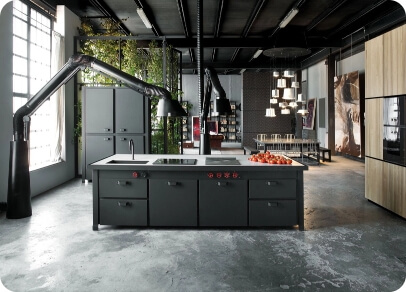
Industrial
Simple, sleek features with utilitarian functionality reminiscent of old warehouses and factories. Exposed brick, piping, wooden beams, concrete and steel.
Palette: Neutral, Warm hues
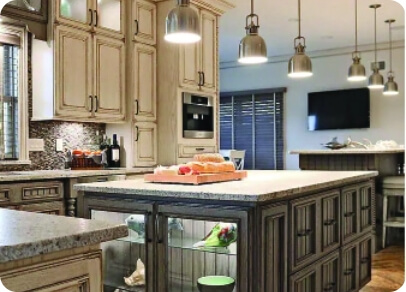
Asian
Characterized by clean and simple horizontal lines to create a sense of serenity, balance and a connection to nature (such as the use of bamboo). Many elements are symbolic.
Palette: Calming, Earthy, Organic
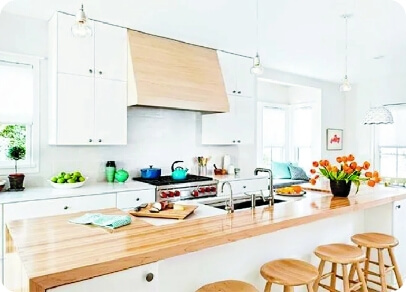
Contemporary
Open and airy (uncluttered) appearance. Streamlined look and feel with cutting edge technology.
Palette: The Sky's The Limit
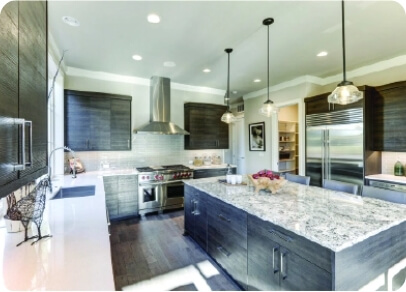
French Country
An ode to country living with a homey, yet elegant feel and refined sense of formality. Pieces (such as cabinetry) utilize scrolls and moldings.
Palette: Earthy Colors, Toile, Florals
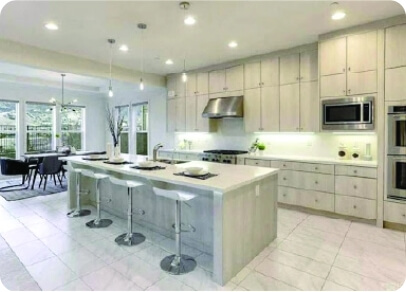
English Country
Unlike French country, English country design is intended to portray a “lived in” feel to reflect years of entertaining and enjoying life.
Palette: Chintz Florals And Hunting Scenes With Deep Natural Hues
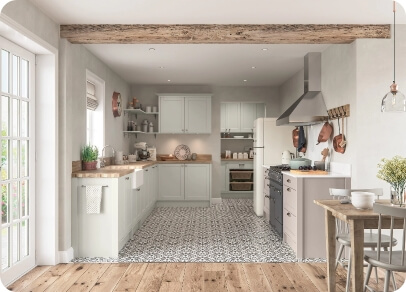
Shabby Chic
Vintage decor and distressed furnishings to create a relaxed and comfortable feel. A blend of aesthetics including french, coastal, cottage and farmhouse.
Palette: Neutral Bases With Distressed Materials And Hints Of Pastels
TESTIMONIALWhat Our Customers Say About Us
Common Kitchens Questions
Sed ut perspiciatis unde omnis iste natus error sit voluptatem accusantium doloremque laudantium, totam rem aperiam, eaque ipsa quae ab illo inventore veritatis et quasi architecto beatae vitae dicta sunt explicabo. Nemo enim ipsam voluptatem quia voluptas sit aspernatur.
To Schedule A Complimentary Consultation With One Of Our Specialists
Give us a call today.
Contact Us
